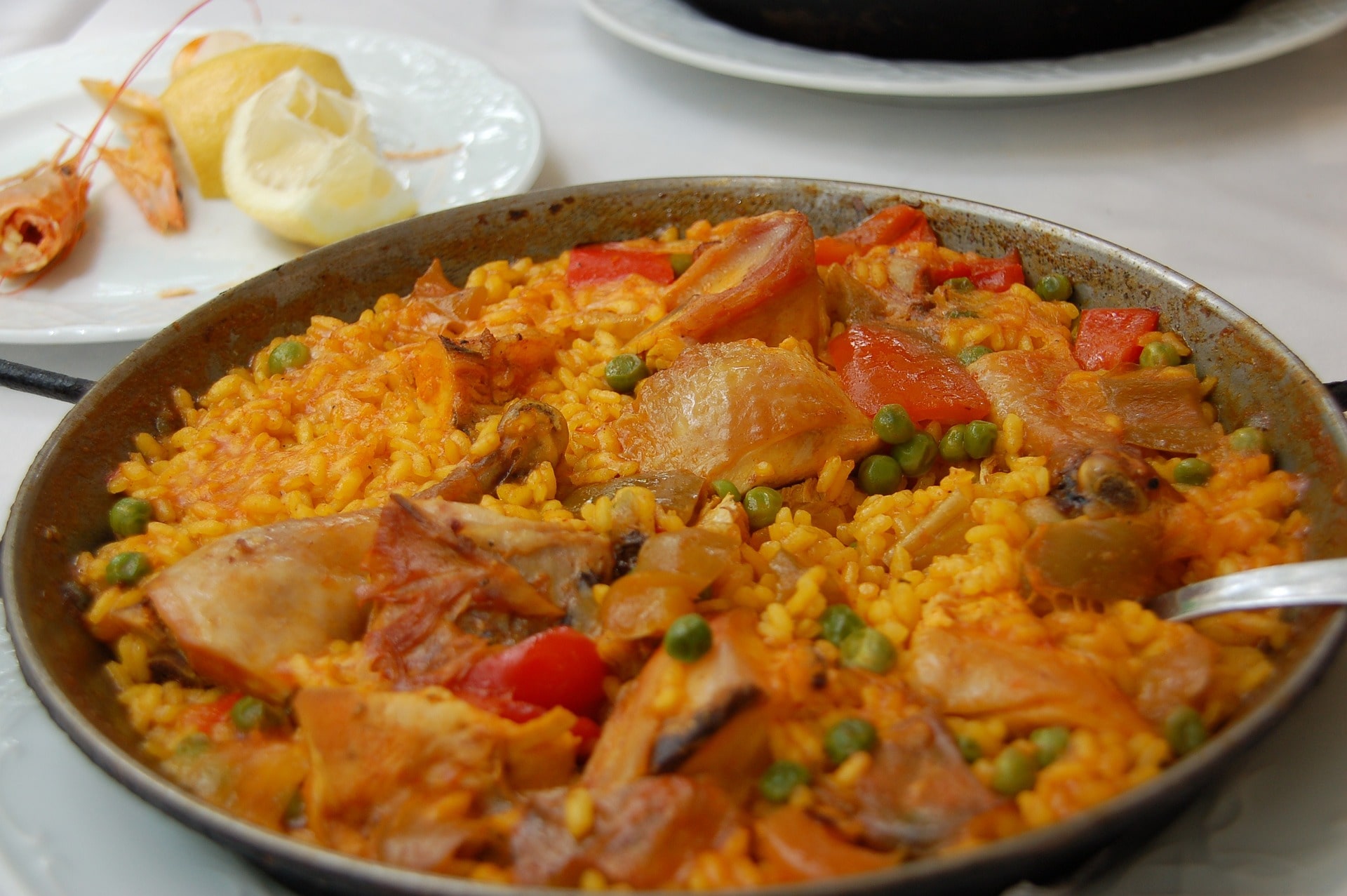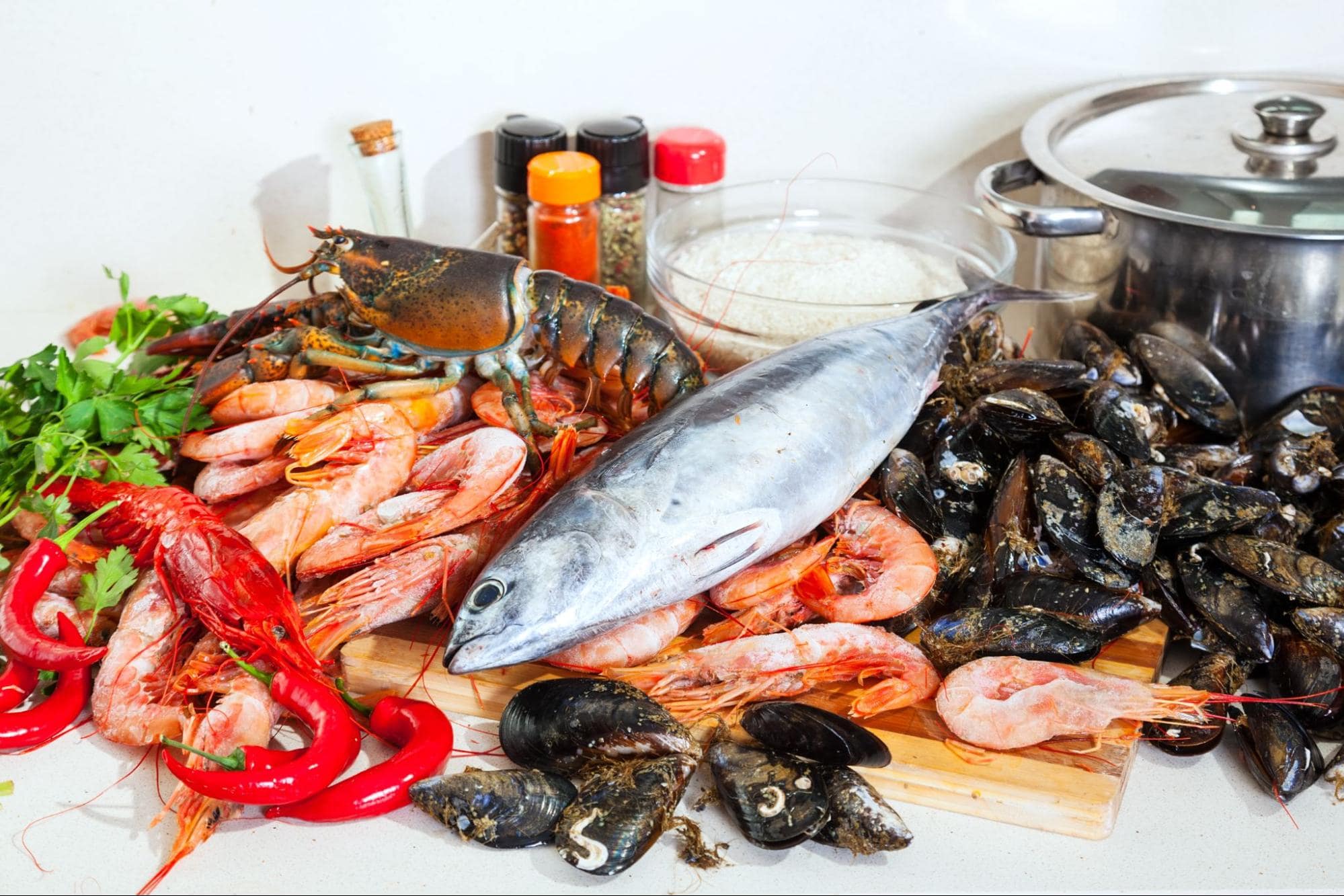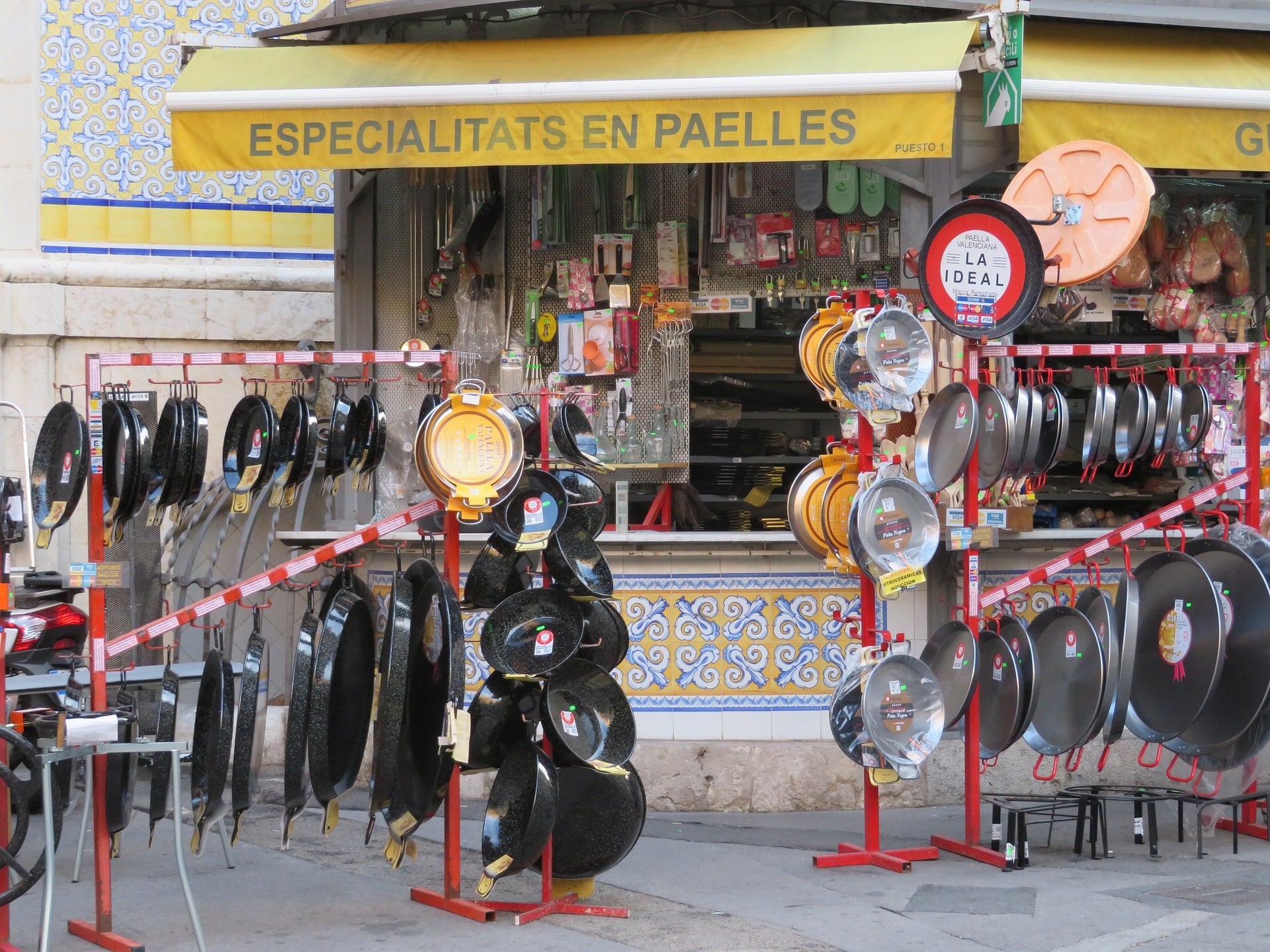

CHRISTMAS ORDERS ARE OPEN!
CLICK HERE TO PLACE YOUR ORDER.
Delivering for Christmas on the 22nd, 23rd and 24th of December, and for NYE on the 27th, 28th, 29th, 30th and 31st direct to your door.


When visiting Spain, Paella is a dish that visitors are excited to enjoy. This particular meal has become synonymous with Spanish food.
Spanish cuisine is known for its flavorful, aromatic dish, Paella, which is also quite adaptable. How do you make it at home, and what exactly is it?

Spain’s most well-known dish and national dish is Paella. It’s difficult to look at a pan filled with this amazing dish without getting hungry right away! This is what deliciousness looks like: the warm, orangey-gold glow of the paella rice, the pieces of fish, the succulent prawns, shell fish or chicken.
Saffron and paprika are two common seasonings used in the dish. One of the most expensive spices in the world, saffron comes from the mysterious and aromatic crocus sativus flower. Red peppers that are brilliant, sweet, and without heat are used to make sweet paprika.
The correct pronunciation of “paella” depends on the language. It’s pronounced “pah-EL-yah” or “puh-EL-yah” in Spain. Spanish restaurants will sometimes help customers to pronounce the dish properly.
There are many ways of making a seafood Paella. This is not quite the traditional paella recipe, but it packs a lot of flavours, including prawns, fish, black mussels, vongole and calamari. A completely healthy meal cooked in one pan, perfect for enjoying communally or with the whole family. Feel free to substitute your favourite kind of seafood into this seafood paella recipe. Make this recipe at home and enjoy some seafood paella anytime you crave it.
You can shop a variety of market fresh seafood on our website at Manettas Seafood Market – enter your suburb, and you will see hundreds of products available in your area, delivered to your door.

Heat the oil on a medium to high heat, in a large paella pan. If you don’t have a paella pan, use a large skillet – this is just the right depth to make paella at home. Add the diced onion, chopped garlic, capsicum, and chilli to the pan and cook over medium heat for 2 minutes.
Add the smoked paprika, turmeric and 1 teaspoon of salt then stir-fry for 1–2 minutes.
Add the chopped tomatoes and cook for a further 5 minutes. Add the tomato paste. Stir in the rice evenly until it is well coated. You can substitute arborio rice or other short grain rice available to you. But the most recommended is bomba rice.
Pour in the wine or a homemade seafood stock as an alternative and simmer until almost absorbed. Add all the seafood broth and bring to the boil. Reduce the heat and simmer for 20 minutes, or until almost all the liquid is absorbed into the rice. Occasionally fluff up the rice with a fork.
Place the fresh mussels and vongole in the paella pan, cover and cook for 2–3 minutes over a low heat. Add the prawns and cook for 2–3 minutes. Add the fish, cover and cook for 3 minutes. Finally, add the calamari rings and cook for 1–2 minutes. Cook for another 2–3 minutes if the seafood is not quite cooked. You can also add chorizo for an additional flavour, and some people also like to add green beans.
Serve with chopped parsley and lemon wedges. Enjoy!
A great seafood paella recipe calls for a saffron infused rice or saffron powder as a substitute. Since saffron threads are expensive, you can skip this but a great recipe would be one with all of the traditional ingredients.

There are several types of Paella. Some of the most common types are:
Paella Valenciana – the most traditional type of paella. Chicken, rabbit, pork, beans, tomatoes, and seasonal artichokes are common ingredients in modern versions. Some people would use chicken stock to give a more flavourful Spanish Paella.
Paella de Marisco – also known as seafood paella. This is typically made with shrimp, lobster, squid, clams, mussels, and other seafood. This dish is especially popular in the summer. A seafood paella with some spanish chorizo is the perfect dish for the summer.
Paella Mixta – this includes meat and seafood, and is a hybrid of Paella Marisco and Paella de Marisco. This is one of the most popular types of Paella worldwide.
Paella Negra – this is completely black due to the use of squid ink in the cooking process. This is a different take on seafood paella.
Paella de Verduras, or vegetarian Paella – this is made entirely with vegetables (including green beans, green peas, tomatoes, bell peppers, seasonal artichokes, and more).

While the other ingredients are delectable, the rice is the cornerstone of any good seafood paella recipe. Here, the stars are starchy, rounded, short- to medium-grain Spanish rice varieties like bomba or Calasparra. You’ll notice that some natives completely ignore the toppings to begin with and eat their rice first!
You might be asking why the kind of rice used is so crucial. The reason is absorption. Spanish rice types like bomba may withstand three times more liquid absorption without rupturing than other varieties. The end product is a dish that is flavourful to the very last grain!When you cook paella, the traditional choice is bomba rice, a round rice grain that retains its structure well during cooking. If you can’t find bomba, use any short or medium-grains of rice. You can use risotto rice in making paella. The important thing is that rice cooks evenly to make it a perfect seafood paella.

Paella can include any combination of meat and seafood (for example, chicken, chorizo, rabbit, shrimp, shellfish, eel, or pork) and vegetables (like onions, bell peppers, peas, and beans). Paella is made with rice seasoned with saffron, a mild spice that gives the dish its signature golden hue.

To help create a good socarrat—that crispy, caramelised coating of rice on the bottom— a traditional paella pan is large and flat.
The pan is so crucial to the dish that it gave rise to its name! Paella was originally just a pan, not a rice dish. However, these days, the two are inseparable from one another.
If you don’t have a paella pan, a 4cm-deep medium-weight nonstick frying pan will suffice. It should be shallow and wide to allow moisture to evaporate quickly, with a thin base. If it’s too thick, the heat will be trapped in the pan and the food will overcook.
For even cooking, use a large hotplate or gas burner. When cooking paella, gas or induction cooktops are usually preferable because they provide more even heat distribution.
Paella is similar to risotto in terms of basic ingredients. The main distinction is that paella does not require constant stirring. In fact, it’s critical not to stir it after adding the stock to ensure the delicious, light-golden crust known as socarrat forms on the bottom.
Rotate the pan if the paella is cooking more on one side than the other. When using an electric cooktop or if the element or burner is too small, you may need to cook over two elements.
Paella’s flavour base, sofrito, is traditionally a combination of onion, garlic, and tomato. To give the paella a rich flavour, make sure it’s well cooked.
Chorizo is a traditional paella ingredient. So, even if the recipe doesn’t explicitly call for it, you can use it to colour and flavour your rice early on, and to add depth to the finished dish. Cook thinly sliced chorizo in olive oil in a pan, then cook your sofrito in the same oil.
Paellas must be cooked with plenty of olive oil. The oil separates the starchy rice grains and transports the sofrito flavours throughout the dish.
In the last 5 minutes of cooking, add the last ladle of fish stock to the paella. This aids in the cooking of any last-minute ingredients, such as tomatoes and beans, and ensures that the rice is moist but not soggy.
To see if the paella is done, use a spoon to taste a little rice from the pan’s edge; this rice will be cooked last because it is the furthest away from the heat in the centre. When the rice is done, it should be tender but firm to the bite. If it isn’t done, add a little more hot stock or boiling water.
The socarrat is regarded as the best part of the paella. To avoid missing out, gently scrape it from the pan’s bottom with a large spoon.